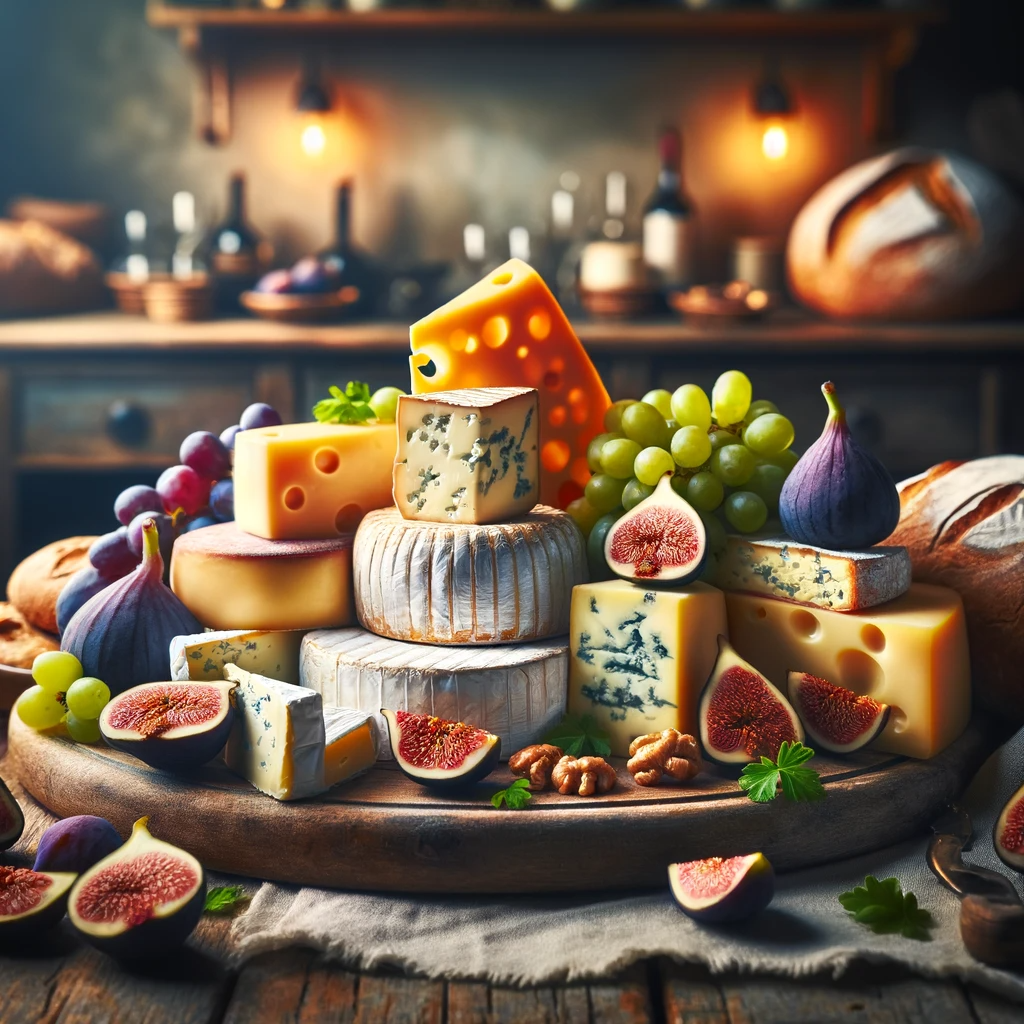Cheese is one of the most beloved and versatile foods in the world. From its humble beginnings as a way to preserve milk, cheese has evolved into a rich tapestry of flavors and textures, each variety unique in its own way. In this comprehensive guide, we will explore various cheese varieties and delve into their unique ingredients, helping you appreciate the incredible diversity within the world of cheese.
The Basics of Cheese-Making
Before we dive into the wide array of cheese varieties, it’s essential to understand the fundamental cheese-making process. At its core, cheese-making involves coagulating milk proteins, separating the curds from the whey, and aging the resulting curd to develop distinct flavors and textures.
Main Points:
- Coagulation: The process begins by adding an acid or rennet to milk, which causes the proteins to coagulate, forming curds.
- Curd Separation: The curds are then separated from the liquid whey through cutting, heating, and draining.
- Aging: Different aging techniques and timeframes are employed to create a variety of cheese textures and flavors.
Cheese Varieties by Milk Type
Cheese can be made from various types of milk, each imparting unique characteristics to the final product. Here are some of the most common milk types used in cheese-making:
Cow’s Milk Cheeses
- Cheddar: Known for its sharpness and versatility, cheddar cheese is made from cow’s milk and aged to perfection.
- Brie: This creamy, soft cheese has a mild, buttery flavor and a white, edible rind.
- Gouda: A Dutch cheese with a smooth, yellow wax coating and a mild, nutty taste.
Goat’s Milk Cheeses
- Chevre: Fresh and tangy, chevre is a goat’s milk cheese often used in salads and appetizers.
- Pecorino: An Italian cheese made from sheep’s milk, pecorino has a sharp, salty flavor and is used in pasta dishes.
Sheep’s Milk Cheeses
- Roquefort: A famous blue cheese, Roquefort is made from sheep’s milk and aged in natural caves for a distinctive, tangy flavor.
- Manchego: Hailing from Spain, Manchego is a firm cheese with a nutty taste, crafted from sheep’s milk.
Buffalo’s Milk Cheeses
- Mozzarella di Bufala: Creamy and rich, this Italian cheese is a staple in pizza and caprese salads.
Mixed Milk Cheeses
- Gorgonzola: Combining cow’s and sheep’s milk, Gorgonzola is a creamy blue cheese with a robust flavor.
Cheese Varieties by Production Process
The method of cheese production also plays a significant role in defining its unique characteristics. Let’s explore different cheese varieties based on their production processes:
Fresh Cheeses
- Cream Cheese: A smooth and creamy cheese commonly used in spreads and desserts.
- Ricotta: This Italian cheese has a grainy texture and is often used in pasta and dessert recipes.
Semi-Hard and Hard Cheeses
- Parmesan: A hard, aged cheese with a sharp and nutty flavor, perfect for grating over pasta dishes.
- Swiss: Known for its iconic holes, Swiss cheese has a sweet, nutty taste and melts beautifully in sandwiches and fondues.
Blue Cheeses
- Stilton: A British classic, Stilton cheese is creamy with blue veins running through it, offering a bold, tangy taste.
- Danish Blue: A milder blue cheese option with a creamy texture and slightly sweet flavor.
Washed-Rind Cheeses
- Limburger: Infamous for its pungent aroma, Limburger cheese has a soft interior and a strong, savory taste.
- Epoisses: This French cheese is washed with brandy, resulting in a strong, creamy, and full-bodied flavor.
Unique Ingredients That Set Cheese Apart
Besides the milk type and production process, many cheeses incorporate special ingredients to create distinct flavors and textures. Some examples include:
Truffles
- Truffle Brie: Creamy brie cheese infused with the earthy aroma of truffles for an indulgent experience.
- Truffle Pecorino: Pecorino cheese combined with truffle pieces, providing a robust and aromatic flavor profile.
Herbs and Spices
- Herbed Goat Cheese: Fresh goat cheese blended with herbs like chives, basil, and thyme for a burst of freshness.
- Pepper Jack: Monterey Jack cheese with jalapeño peppers, adding a spicy kick to your dishes.
Fruits and Nuts
- Grape-Infused Gouda: Gouda cheese marinated with grapes, offering a sweet and fruity twist.
- Blue Cheese with Walnuts: Blue cheese paired with crunchy walnuts for a delightful texture and taste contrast.
Conclusion
Cheese is a world of flavors waiting to be explored, with each variety offering a unique taste experience influenced by its milk type, production process, and additional ingredients. Whether you’re a cheese connoisseur or just starting your cheese journey, this guide will help you appreciate the diversity and complexity of this beloved dairy product. So, next time you savor a piece of cheese, take a moment to relish the artistry and craftsmanship that goes into creating these delectable delights. Happy cheese-tasting!
